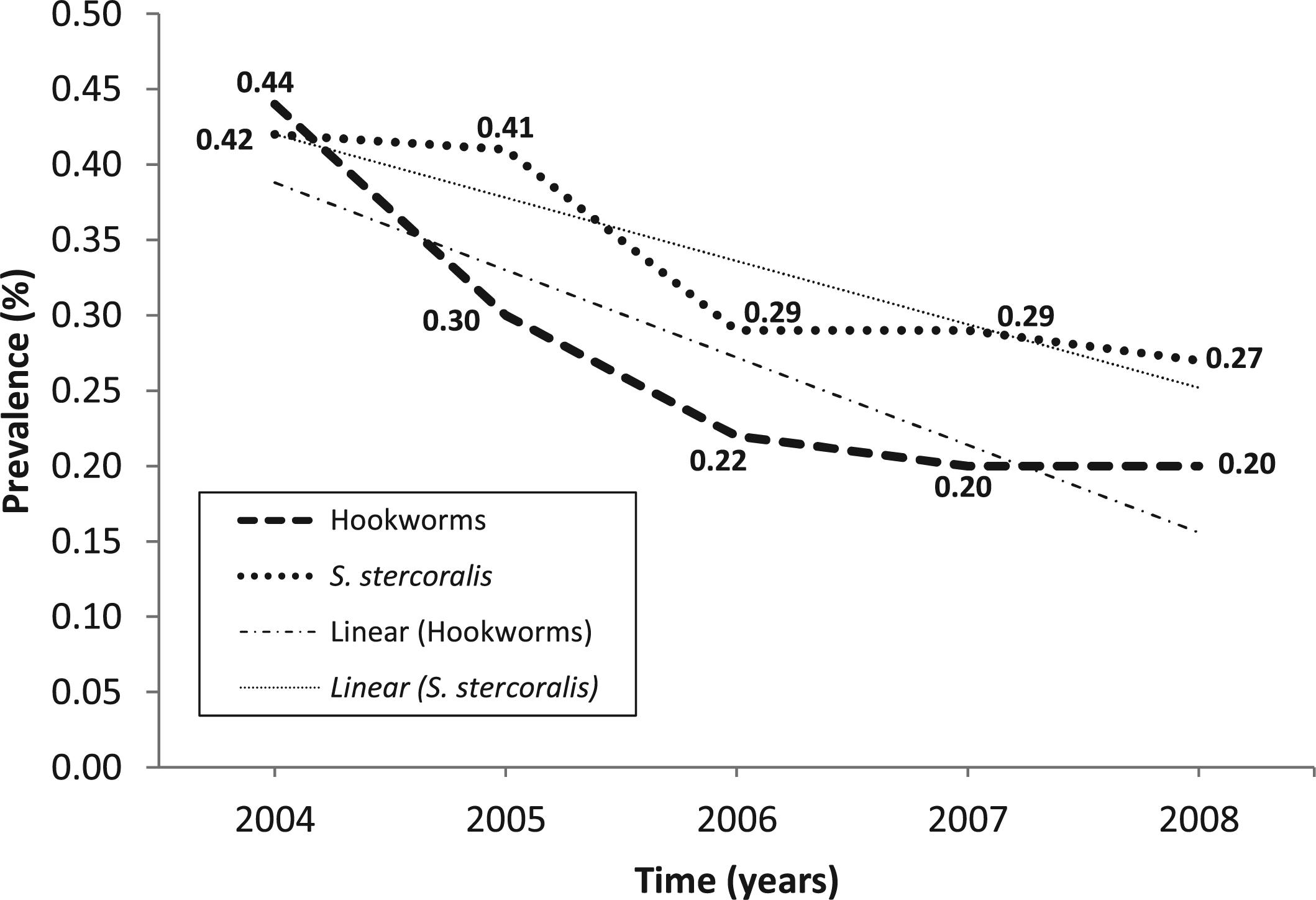SUMMARY
Parasitic infections are responsible for substantial mortality and morbidity worldwide. In most healthy individuals, little overt pathology is observed during infection with S. stercoralis. However, the symptoms in advanced cases may include gastrointestinal bleeding. Anemia is most commonly associated with hookworm infection, especially when several hundred worms are present. Our study evaluates the relationship between the hookworm or S. stercoralis infection status and the hemoglobin concentration of individuals examined by a private network of laboratories in Salvador, Bahia, Brazil. We examined 374,120 samples from middle-class individuals living in Salvador City from January 2004 to April 2008. The stool samples were analyzed by the Lutz and Baermann-Moraes methods, and the blood samples were analyzed for hemoglobin concentration and eosinophil counting. The prevalence of hookworm and S. stercoralis were 0.27% (1,027) and 0.34% (1,286), respectively. The prevalence of hookworm and S. stercoralis infection was significantly higher in males than in females and increased with age. Eosinophilia was a common laboratorial finding in individuals infected with hookworm and S. stercoralis. The hemoglobin concentration was lower in the hookworm-infected individuals than in non-infected ones, but none of the examined patients were anemic. Lack of anemia could be a consequence of the socioeconomic status of these patients.
Hookworms; S. stercoralis ; Eosinophilia; Anemia


